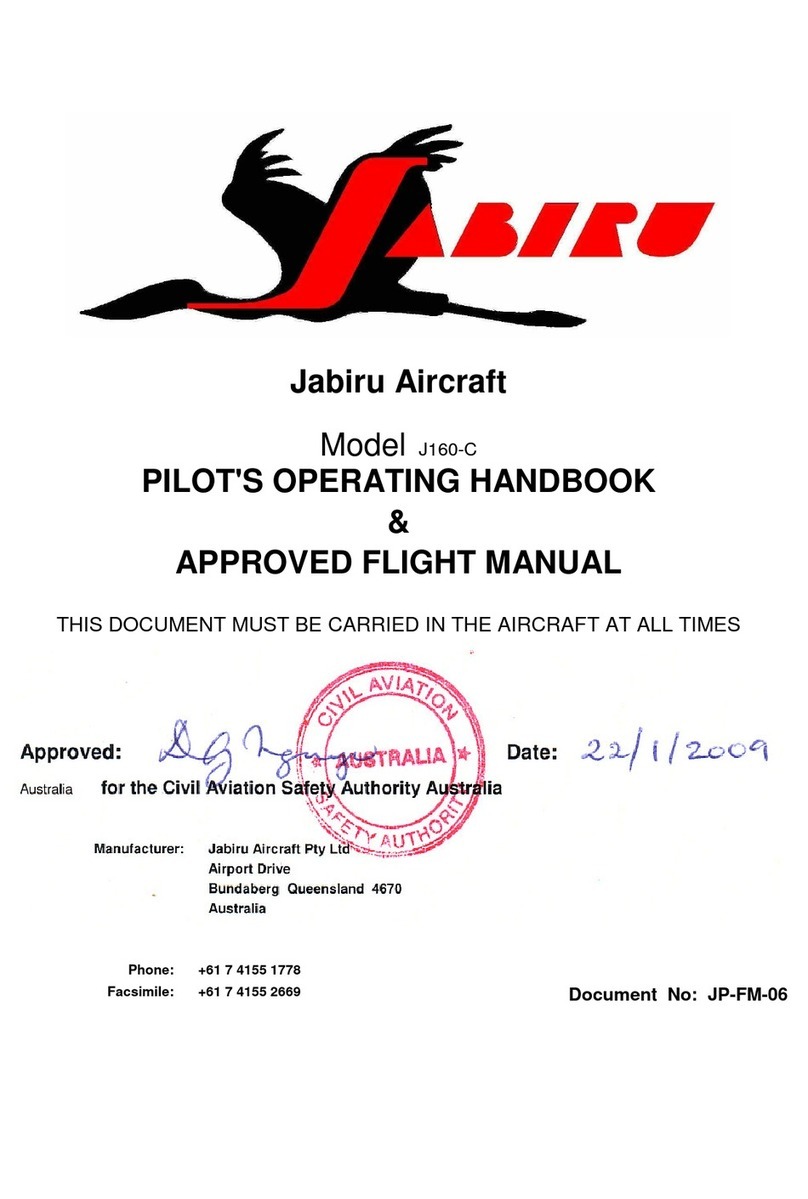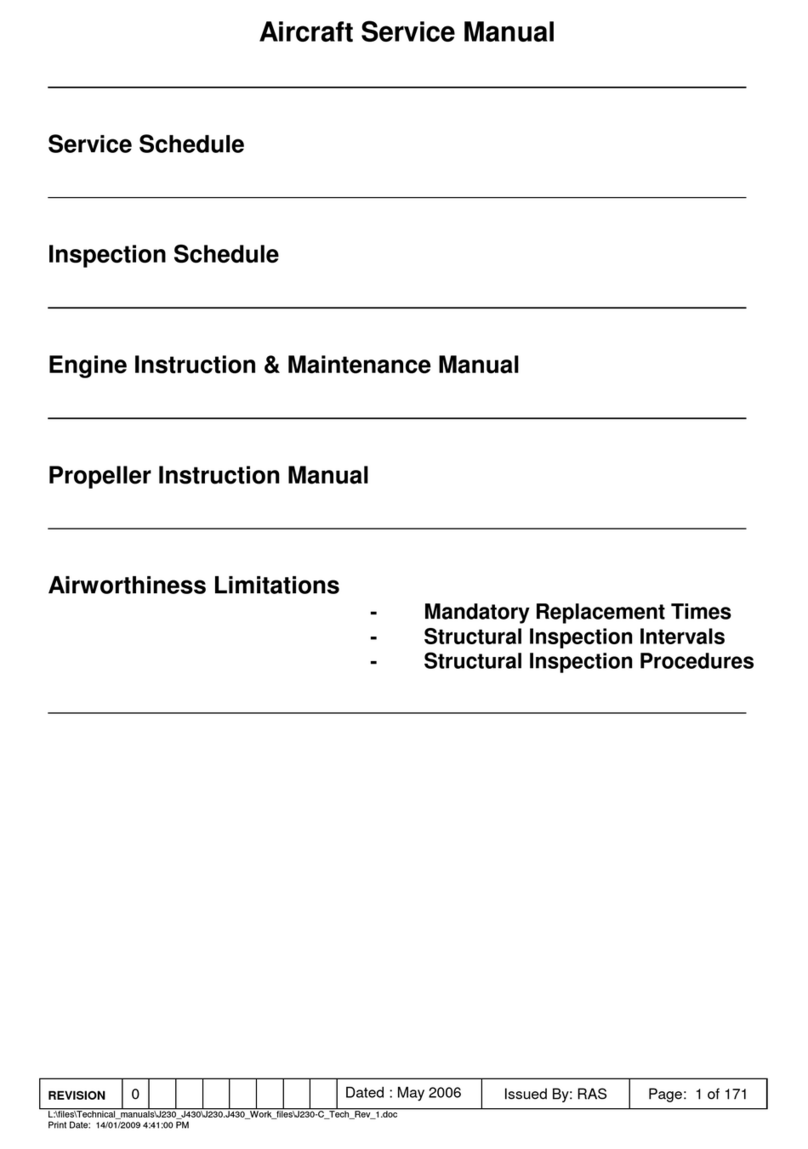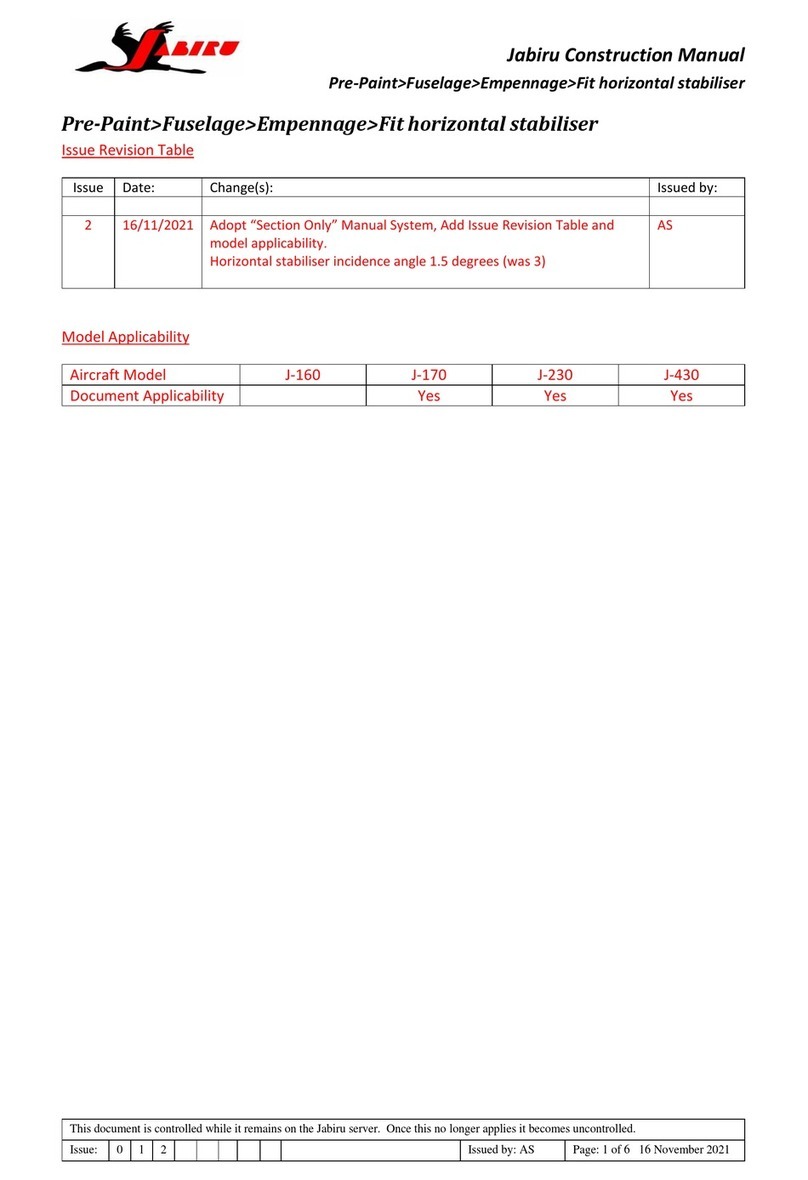Jabiru Aircraft Pilot’s Operating Handbook
Model J120-C
JP-FM-10 Revision: 028 Nov 2007 Page 4 of 50
0.1 INTRODUCTION
This Operating Handbook has been prepared to comply with the requirements of ASTM F2245.
This Operating Handbook includes the information required of the Flight Training Supplement.
The basic handbook provides all the information, procedures and limitations required to
operate the aircraft as a Light Sport Aircraft. Information, procedures and limitations
relating specifically to other operations are provided in the appropriate supplement.
The operating procedures presented herein are the result of Jabiru Aircraft’s knowledge and
experience gained up to the date of issue or amendment of this handbook. The handbook is not
intended to be a guide for basic flight instruction or as a training manual. It may be used for
operational purposes only if kept in a fully amended state. It contains all the information
considered necessary to safely operate the aircraft.
The operator must be thoroughly familiar with the aircraft and the contents of this handbook
before initial operation. Thereafter the handbook should be reviewed periodically to enable the
operator to maintain the highest level of familiarity with the aircraft, its controls and recommended
operating procedures.
0.2 PILOT’S OPERATING HANDBOOK (POH)
The handbook is valid only for the particular aircraft identified on the AIRCRAFT
PARTICULARS page, and unless subsequently amended, refers to the aircraft as originally
delivered from the factory. The handbook consists of the following:
Basic POH
The basic POH provides all required details of the standard aircraft and the procedures required
to operate it in the LSA category. Apart from the listing in Section Error! Reference source not
found., no other details of any optional equipment fitted at the factory will be found in the basic
POH. Refer to the relevant supplement.
Supplements
Self contained supplements are provided in SECTION Error! Reference source not found. of
the POH to provide details and procedures associated with the fitment of specified optional and
special purpose equipment.
Amendments
Any amendments to any page of the POH is to have an amendment date. All amendments are
to be incorporated as soon as possible after their receipt and details entered into the appropriate
amendment record sheet.





































